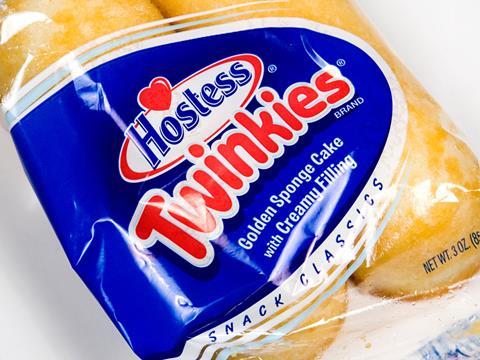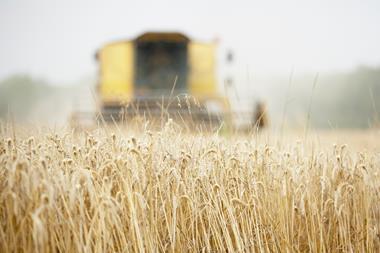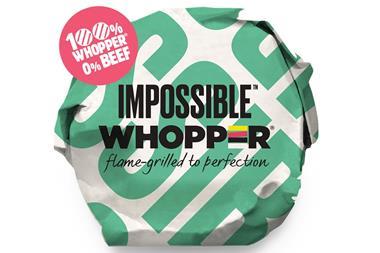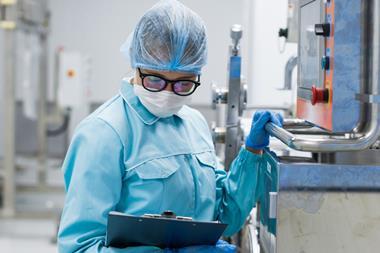When the first GM product hit US supermarkets in 1994, the benefits didn’t begin and end on the production line.
Yes, the genes of the Flavr Savr tomato, developed by small Californian biotech company Calegene, had been tweaked to help the fruit better withstand the rigours of transportation. But crucially the GM tomato tasted significantly better too, claimed its creators. And initial sales of the scientific ‘superfood’ showed promise. Three years later though, Calgene was snapped up by Monsanto and the culture of GM research switched. Focus moved to “products designed to benefit chemical-dependent agriculture, and the general public has become more wary of the use of this technology to alter our food supply,” says Belinda Martineau, who helped develop the Flavr Savr.
Now though, a raft of new GM and gene-edited products are in development, designed purely with the consumer in mind. Bread that contains a strain of wheat suitable for coeliac sufferers is set to hit supermarkets within five years. Rapeseed oil with extra helpings of omega-3 and bread packed with extra dietary fibre too. All thanks to genetic tweaks. So, could these GM ‘superfoods’ potentially win over critics?
Research by The Grocer suggests so. According to a 2017 survey, 39% of UK consumers could be tempted to try GM foods if they came with added health benefits. This priority ranks far higher than lower prices (27%) and speeding up production for farmers (28%).
“Commercialising foods that have improved nutritional value - or any other trait valued by consumers - due to the addition of GE (genetically engineered) traits could very well improve perceptions of GE foods,” says Martineau. Progress will be on a product-by-product basis though, says Jan Chojecki, MD of Norwich-based PBL Ventures, which is looking to bring the ‘good’ gluten bread to market. “This wheat strain has a clear consumer benefit for a significant number of the general public.”
“We are accomplishing the same thing that occurs in nature, but are applying our technology to make the editing more precise”
This isn’t GM in the traditional sense either, he adds, as the wheat strain used has had genetic traits “knocked out” rather than added in. “It’s a genetic modification tool which is not putting anything into the wheat but is stopping the specific proteins that cause coeliac from being expressed.”
He’s convinced it won’t be long before these products are ready to go on sale. “It will be in the US in maybe four years, and in the UK in about five or six.”
At US biotech company Calyxt, developers are also looking to help meet consumer demand for added fibre. “We have created a wheat with three times the amount of dietary fibre of white wheat flour,” says CEO Federico Tripodi, by removing “unwanted DNA”. Tripodi doesn’t like the term ‘GM’ though. “This is completely different from those GMOs that consumers have learned about for the last two decades, which were based on introducing foreign DNA into a crop. We are accomplishing the same thing that occurs in nature through random variation, but are applying our technology to make the editing more precise, without adding anything to the crop.”
Read more: Why fibre is the latest nutritional trend to hit shelves
Liz O’Neill of campaign group GM Freeze scoffs at this. “There is a concerted effort to rebrand GM, particularly newer techniques such as genome editing. Obviously there will be more of a discussion about traits that might have a direct interest to consumers rather than traits that increase the profits of those who own the patents or address agricultural issues. But this is exactly what was said about GM 20 years ago.”
Nonetheless there’s a growing momentum. While the high-fibre wheat still has a few years of development remaining, Calyxt will be bringing to market its first product later this year - a high-oleic soyabean oil. The oil has been developed by applying “the same concept as the high-fibre wheat but to a different problem,” he explains. “We identified one enzyme in soyabeans that turns the good fats into the bad fats. By turning off this enzyme we produced a much better soyabean oil and increased the oleic acid. Before, the soyabeans had 24% - ours now have 80% oleic acid and 20% less saturated fat.” Studies have shown that higher levels of oleic acid could help reduce the risk of heart disease, type 2 diabetes and obesity.
After seven years of development, the oil will be on the market in the US later this year, and Chojecki is also looking at North America as the first market for his coeliac-friendly wheat. With 60%-70% of processed foods available on the US market reportedly containing at least one GM ingredient, this seems logical.
From Twinkies to animal feed, how to label GM food

The raft of GM superfoods under development are arguably different from the GM foods of the past. Not only are they produced with health benefits in mind, but the majority of them use a newer technique of removing traits rather than inserting foreign DNA, a process known as gene editing. And this ultimately affects how the food will be labelled on UK shelves.
It all comes down to whether the food has been produced ‘from’ or ‘with’ GM, according to the Food Standards Agency. Food produced ‘from’ GM has either been subject to GM or has an added GM ingredient. This includes oil derived from GM plants such as maize or soya and Twinkies (pictured) made with GM corn syrup.
Where this is the case, the FSA says the presence of GM must be clearly indicated either in the list of ingredients or on the label. Any food sold loose or in small containers must be accompanied by a visible sign. This includes food sold by restaurants, takeaways and cafés.
Where the food has been produced ‘with’ GM, and has no GM material present, it does not fall under the same legislation. This would include foods that have had GM technology applied to them but are not themselves of GM origin, do not contain GM ingredients or have GM material present in the final food. These do not need to be labelled, in the same way. Products from animals reared on GM animal feed, for example, are exempt. The FSA says this comes down to GM feed being very unlikely to contain viable GMOs and it being digested by animals in the same way as conventional feed.
Food from animals that are fed with authorised GM feed is considered to be as safe as food from animals fed on non-GM crops.
But Liz O’Neill of GM Freeze argues that this leaves the consumer without the necessary information to make an informed choice.
“All forms of genetic engineering can have unintended alterations of the genome via the process,” she says. “It needs to have robust regulations to ensure that it is entirely safe, which includes the environmental impact in the production and farming. And then people have the right to make an informed choice, which they can only do with clear consumer labelling.”
It’s a different story in the UK, where no GM crops have been licensed for commercial use and few GM products are sold in supermarkets. There are signs of change though. Defra has approved a field trial this year in Hertfordshire for genome-edited camelina plants, modified to have a higher level of oleic acid.
“This is the first time any genome-edited material has been trialled in the UK, if not Europe,” says Professor Johnathan Napier, who is leading the trial. “That’s quite exciting.”
The camelina, which is being trialled at Rothamsted Research, has been developed at INRA’s Versailles-Grignon Research Centre in France, where a gene responsible for making polyunsaturated fatty acids has been deleted so the camelina plants only make the health-boosting oleic acid - the same gene-editing technique used by Tripodi and his team.
Rothamsted is also in its fourth year of trialling camelina plants that have been modified to accumulate omega-3 fish oils, through “what some might describe as ‘old school’ genetic modification”. The camelina has also been trialled in the US and Canada and has benefits for both consumer and farmer.
“As a planet, we take around a million tonnes of fish oil out of the ocean every year,” says Napier. “The fish oil then goes straight back into fish farming where species have to be fed omega-3 fish oils. Otherwise, the fish might not develop properly and the fish we buy off the supermarket shelves won’t have these health beneficial oils. We’re trying to break the cycle and add to the oceanic sources of fish oils but by producing them on land.”
Which all sounds laudable. So will consumers know the story behind their food? Not necessarily. Salmon fed with omega-3 fish oils developed via this technique will not need to be labelled as GM, in the same way that meat sold in supermarkets does not need to be labelled as being from animals fed by GM soyabeans (see box, left). Napier says the decision was made by the supermarkets five years ago to stop labelling meat as GM fed, and “there was no consumer backlash or concern”.
That’s not quite the case, though, says O’Neill. “The UK public has consistently shown they want GM food and GM-fed food to be labelled and that they are willing to pay more for that. It isn’t just about knowing what is safe - we have a right to make informed decisions about what has happened all the way along the food chain. Look at how angry people were about the horsemeat scandal - nobody said it wasn’t safe, but that it wasn’t what it said it was, and that’s not right. People have a right to know what they’re eating.”
Martineau believes transparency is key. It was part of the appeal of the Flavr Savr. “It was labelled as ‘grown from genetically modified seeds’ and consumers appreciated the fact that its developer Calgene was so transparent about that,” she says. “The bottom line is regulation of GE foods should be more rigorous and all GE foods should be labelled as such. Assuming those criteria are met, GE superfoods could certainly improve perceptions of GE foods more generally.”
Transparency
Tripodi agrees that openness is crucial, and wants consumers to be able to visit the facilities that has produced his high-oleic oil. And with the World Health Organization announced in May that it plans to eliminate transfats globally by 2023 this “ambitious goal” is a “tremendous opportunity,” he says. “Our global food supply is filled with oils that have transfats. We have developed a soyabean oil with zero transfats and the health profile of olive oil. Having more solutions such as the high-oleic oil we’re developing is a large part of the solution and a big opportunity for companies trying to bring these products to market.”
Opinion: Attitudes to GM food & drink are changing
But for O’Neill this is another step in the wrong direction. “There’s nothing wrong with rapeseed oil. Under certain forms of processing it can produce transfats, but maybe it would be better if people ate less processed foods. We would rather see investment going into examining why there are these health issues and going towards preventative measures.”
Napier accepts more than one option should be on the table. “For a lot of people what they eat is dependent on their economic circumstances. You have to take more than one approach.”
And undoubtedly attitudes towards GM appear to be changing with the next generation. A Populus poll of 18 to 30-year-olds conducted on behalf of the Agricultural Biotechnology Council showed only 21% of respondents objected to the use of gene editing and 22% to GM. In fact, 67% agreed that the use of GM crops can play a major role in making UK farming more sustainable. Add to that GM or gene-edited foods that can offer an increasingly health-conscious consumer a plethora of added nutrient benefits too, and we might be on the verge of a tipping point for GM-acceptance.
GM-based ‘superfoods’ coming to the market soon

Golden Rice
After nearly two decades of development, Golden Rice has now been declared safe for humans by Australia, New Zealand and Canada.
The rice has additional beta-carotene genes, a natural precursor to vitamin A. It aims to reduce vitamin A deficiency in developing countries.
It’s now being trialled in Bangladesh and the Philippines, but has faced criticism for not recognising sooner that earlier forms weren’t safe for consumption.
The FDA also found it failed to meet nutritional requirements to make a health claim. But Dr Russell Reinke of developer IRRI says this is due to the amount of rice consumed by the US being less than in developing countries, where the 200g daily intake would be “significant”.
‘Good’ gluten bread
Those with a gluten intolerance could no longer need to visit the free-from aisle for their weekly loaf.
A wheat-containing bread developed for coeliac sufferers could be on supermarket shelves within five years.
The Institute for Sustainable Agriculture in Spain has removed the proteins in a wheat strain that cause coeliac disease.
But while the wheat can be used to bake buns and baguettes, removing some of the proteins that are important for dough elasticity and performance means there’s more work to be done on developing large volume white sliced loaves.
It’s still an “interesting development” though, says Coeliac UK CEO Sarah Sleet. “But it will be down to individual choice on whether they have a problem with GM.”
High-oleic soyabean oil
Set to hit shelves in the US later this year, Calyxt’s high-oleic soyabean oil could lead the way for other GM ‘superfoods’.
The soyabeans are already planted across 17,000 acres in North America with nearly 80 farmers.
But with the health profile of olive oil, which is also high in oleic acid, what makes Calyxt’s oil stand out? According to Tripodi, it’s the locality.
“Olive oil is a great alternative for some foods but it does impart taste and has to travel long distances after being grown in other continents and regions.
“High-oleic soyabeans will provide a locally made alternative to help consumers get the nutrition they need and can be used in foods where olive flavour is not desirable, such as in meatless plant-based protein products.”



















No comments yet